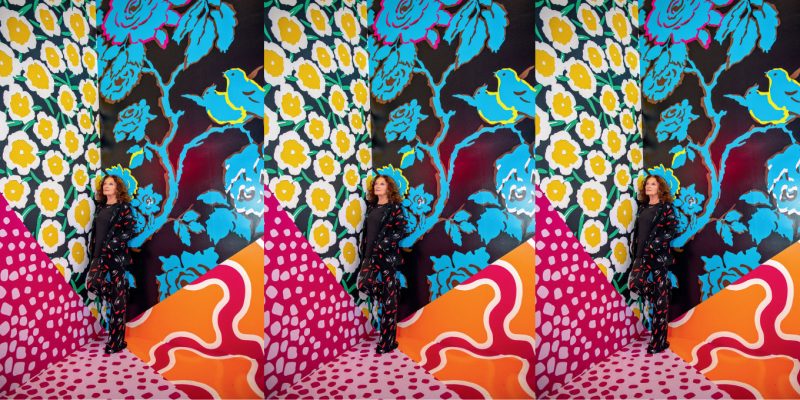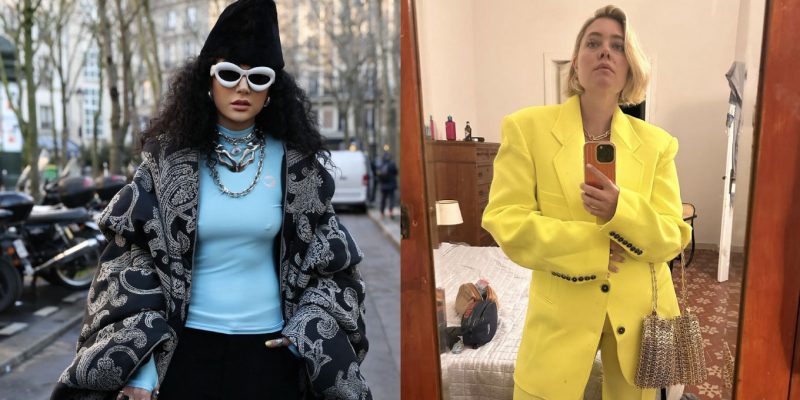Trends
Behind the seams
The timeless tailored jacket is always a runway hit.
by : Nathalie Atkinson- Jan 28th, 2009
The jacket, in all its guises, is the wardrobe staple of this – and every – season. Pea jackets, anoraks, spencers, jerkins, boleros, Nehru jackets, bombers, trench coats and tuxedos-they’ve all come to us from menswear, where jackets have historically denoted social status, military rank or profession. (And they’re still how we distinguish a chef from a bellboy.)
For women, jackets are a layer of armour and a fashion statement all in one, whether it’s Amelia Earhart’s tailored men’s flight bomber or Betty Rizzo’s pink satin number in Grease. Great moments in jacket history include the empowering moment in 1966 when Yves Saint Laurent created Le Smoking evening pantsuit for women-an androgynous take on the men’s tuxedo; later, Saint Laurent introduced the saharienne, or African safari jacket, into high fashion circles. In the ’80s, the jacket’s extreme, padded shoulder seam coincided with women taking on the corporate world: They needed bulk to feel powerful.
Well before Saint Laurent, Coco Chanel was championing the jacket. For his spring haute couture collection, Chanel designer Karl Lagerfeld created a monument – quite literally – to the house’s iconic garment when he erected a statue of a 20-metre cardigan jacket on the runway. Mademoiselle Chanel was fond of adapting men’s wardrobe staples, like the yachting and sportsmen blazers of her boyfriend, the Duke of Westminster. Taking her cue from a traditional Tyrolean country jacket, Chanel created her first slouchy, unstructured wool cardigan jacket in 1954. Just as she liberated Jazz Age gamines with a little black jersey dress decades earlier, her casual jacket was in direct reaction to the constricting silhouette of the prevailing trend of Christian Dior’s corseted and cinchedwaist New Look. Its blatant ease, embellished with contrasting braid trim and stripped of interfacing, shoulder pads and bust seams, quickly became the house signature. Lagerfeld reinterprets the jacket every season, rendering it in lambskin, faux fur and shimmering hand-set sequins resembling neoprene surf suits, terry cloth or denim. This fall, the jacket gets a deconstructed, neo-grunge treatment in Mademoiselle’s emblematic black and white, using three-dimensional tweed bouclé hand-loomed at Lesage.
When Christie Smythe and Andrea Lenczner started their jackets-only Canadian label, Smythe, five years ago, they were drawn to the idea of mastering the category. “A jacket can be so many things, it’s almost cheating in a way,” says Lenczner. “It’s like having a fantastic shoe or bag: It finishes your outfit, so you can be in your Gap T-shirt and your boyfriend’s jeans and immediately look pulled together,” says Smythe. “In the beginning we even considered naming our company ‘Third Piece,’ which is what you call a jacket or finishing piece in retail,” adds Lenczner.
Image of French actress Marie-Helene Arnaud in a Chanel tweed jacket in 1959; Peter FinkThis fall, Smythe’s key design iwas the Boyfriend Jacket. It’s Debbie Harry strutting onstage wearing an oversized men’s blazer, Molly Ringwald rolling up the satin cuffs of her boxy schoolboy version in Pretty in Pink and Michelle Pfeiffer borrowing Jeff Bridges’ tuxedo jacket in The Fabulous Baker Boys. The Boyfriend Jacket is a take on borrowed finery, and, as all jackets should be, it’s versatile. “The thing is,” enthuses Smythe, “I have yet to find something that the perfect jacket look good with: maxis, minis, skinny jeans, wide jeans, shorts, capris. I challenge you to!”
Tailored advice
At Harry Rosen Bespoke, a typical from-scratch suit requires several fittings and 28 hours of craftsmanship. We asked Howard Atkinson, national manager of Bespoke tailoring, for his top tips on choosing a jacket. “A well-made jacket should be judged by examining its construction, not by reading its label,” he says. “Construction is key to a good fit and longevity.”
Structure The collar should have some substance but still feel soft, not stiff. The lapel and collar should not contain interlining or fusing, and you should be able to roll them back into place easily to give the jacket its original shape. Bemberg, a type of rayon, is the best material for lining jackets; avoid jackets with silk or satin lining. Though it’s popular to use shoulder padding to correct the appearance of postural problems, high-quality jackets derive their structure from an expert cut. And, though it may seem counterintuitive, high armholes allow for more range of motion like driving. They also elongate the torso, so they’re more flattering.
Buttons Are the buttons natural buffalo horn or mother-of-pearl, or have they skimped and gone for plastic? On a good-quality blazer, the buttons should be sewn in and reinforced with a shank-a sort of thread stem-from the inside, which will make the jacket hang better.
Pockets Jackets and blazers can have either single- or double-jetted pockets (that is, flaps that can be tucked inside or out), depending on the design. However, the pockets should be lined for seamless integration into the design without interfering with the fit of the jacket. High-quality jackets will possess these elements, as well as small half-moon stitches around the pocket edges for added reinforcement.
Image of French actress Marie-Helene Arnaud in a Chanel tweed jacket in 1959; Peter Fink
Newsletter
Join our mailing list for the latest and biggest in fashion trends, beauty, culture and celebrity.
Read Next

Fashion
Are Fashion Brands Getting Greener?
While the fashion industry is making a lot of noise about being more sustainable, a closer look shows that its earth-friendly commitments are often more illusion than reality.
by : Marouchka Franjulien- Apr 19th, 2024

Beauty
What Beauty Packaging Is Actually Sustainable?
We sought out leaders in the field to help us get to the bottom of the blue bin once and for all.
by : Victoria Christie- Apr 19th, 2024

Culture
This University Elevates Women to New Professional Heights
You shouldn’t have to pause your life to move forward in your career.
by : ELLE Canada- Apr 16th, 2024




